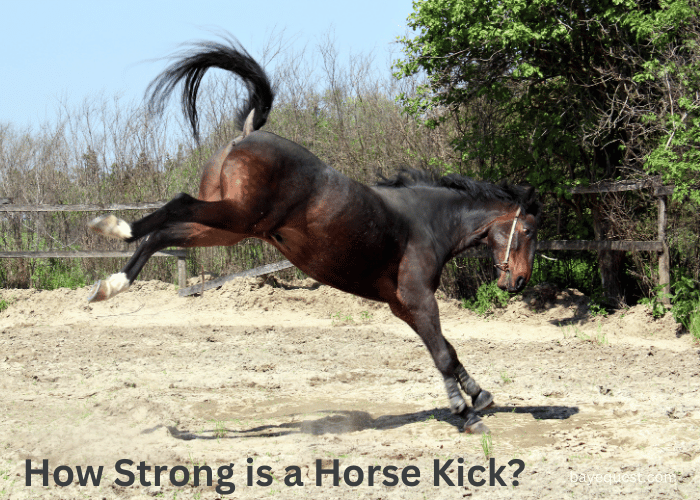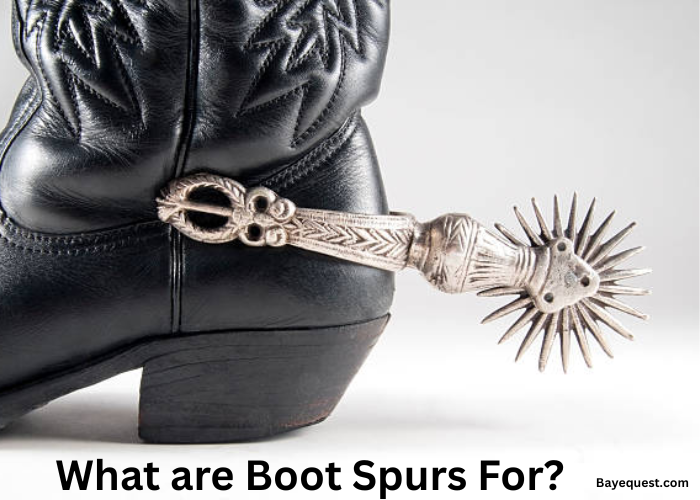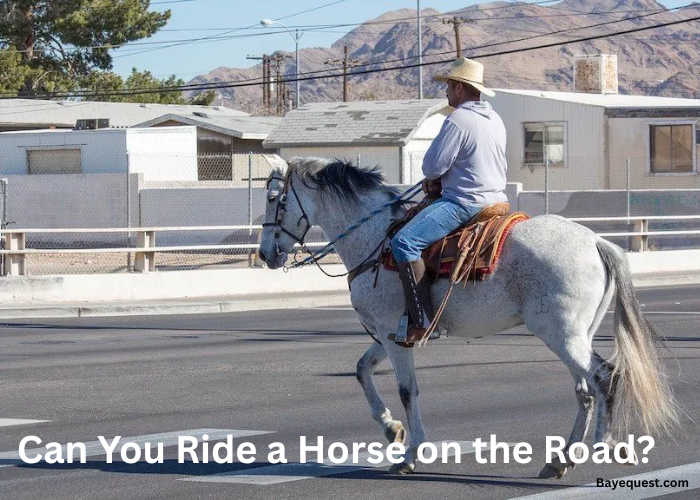A horse kick is no joke. One strike can break bones or send you flying. But just how strong is it?
Horses have powerful muscles, speed, and weight behind every kick.
That combination makes their strikes dangerous. A single well-placed blow can cause serious injury—or worse.
Understanding this power is important. Whether you’re a rider, handler, or just around horses, knowing the risks can keep you safe.
Let’s break down the true force of a horse’s kick and why it demands respect.
How Strong is a Horse Kick? Key Takeaway
A horse kick can deliver a force of up to 2,000 pounds per square inch (PSI). This is strong enough to break bones, dent metal, or cause serious injury. The strength of a kick depends on the horse’s size, muscle, and speed. Always stay cautious and aware of these powerful animals.
Reasons Why a Horse Kicks
Let’s understand some reasons why horses kick:
1. Self-defense
Horses are prey animals, and their primary instinct is to protect themselves from perceived threats. A kick is one of their most effective tools for self-defense.
If a horse feels cornered, startled, or threatened, it will kick to keep danger at bay. This response can be triggered by sudden movements, loud noises, or unfamiliar surroundings.
Even a well-trained horse might kick if it feels its safety is compromised. Understanding this natural instinct helps handlers approach horses calmly and predictably.
2. Guarding resources
Horses are known to guard their food, water, and space from other animals, including other horses. This behavior stems from their need to secure essential resources for survival.
When they feel that their access to food or water is threatened, they may kick to assert dominance or protect their resources.
This is common in environments where horses are kept together and food is limited.
3. Pain or illness
Pain or illness can make a horse more sensitive and reactive, leading to kicking behavior. When in pain, horses may kick to express discomfort or try to alleviate their pain.
For example, a horse with a stomachache might kick at its belly. Similarly, if they have a leg injury, they may kick when someone touches the sore area.
This kind of kicking isn’t about aggression; it’s a reaction to distress.
4. Insects
Insects can be more than just a nuisance to horses—they can be downright irritating. When flies, mosquitoes, or other pests bother them, horses often kick their legs to shake off the pests.
This kicking is directed toward their own bodies, such as their belly or legs. It’s a natural reflex and doesn’t usually pose a risk to people, but it can be a sign that a horse is uncomfortable.
Providing fly sprays, masks, and other protective measures can help reduce this type of kicking and keep the horse more at ease.
5. Play
Sometimes, a kick isn’t meant to harm at all; it’s just play. Horses, especially younger ones, use playful kicks to interact with each other.
This behavior can be part of mock fights, social games, or simply expressing their energy. Playful kicking is generally less forceful and more frequent when horses are kept in groups.
However, you need to be cautious. Even a playful kick can cause injury if you’re in the wrong place at the wrong time.
6. Mating behavior
Kicking can also be a part of mating behavior, especially in mares.
When a mare is not ready to mate or wants to ward off unwanted attention from a stallion, she might kick as a way of saying “back off.”
Stallions, on the other hand, might kick to establish dominance or compete with other stallions for the attention of a mare. This behavior is more common in breeding environments.
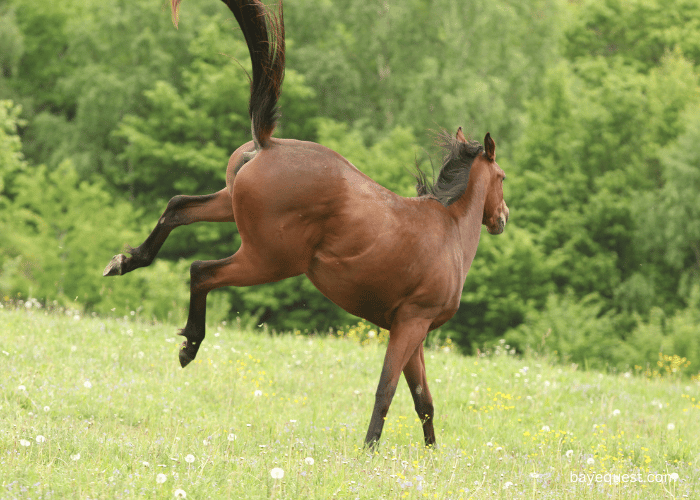
How Strong Is a Horse Kick?
A horse kick can deliver a staggering force of around 2,000 pounds per square inch (PSI). That’s enough to break bones, dent car doors, or cause serious injury.
This immense power comes from the horse’s muscle mass, weight, and the speed it can generate in a split second.
Even at the lower end, a horse kick can still deliver a force of around 1,200 PSI, which is more than enough to cause significant damage.
This is why understanding and respecting the sheer strength of a horse’s kick is crucial for anyone around these powerful animals.
How to Measure the Force of a Horse Kick
Measuring the force of a horse requires specialized equipment and careful planning.
Researchers use devices like pressure sensors, force plates, or accelerometers to capture the power of a kick.
These devices are placed in a safe and controlled environment where a horse is encouraged to kick.
Force plates, for example, measure the impact when the horse’s hoof hits the surface, calculating the force in pounds per square inch (PSI) or Newtons.
High-speed cameras can also be used to analyze the speed and impact angle.
Combining these tools gives a clearer picture of just how strong a horse kick is.
Factors Affecting the Strength of a Horse Kick
Several factors influence the strength of a horse’s kick, making each kick unique in its power and impact. Here are the key factors:
1. Breed and size
Larger breeds like Clydesdales or Shires have more muscle mass, which can result in stronger kicks. A horse’s overall size and build contribute significantly to the force it can generate.
2. Age and physical condition
Younger, healthier horses tend to kick harder due to their agility and muscle strength. Older horses or those in poor health may have less powerful kicks because of weaker muscles and joints.
3. Emotional state
A horse’s emotional state plays a big role in the force behind a kick. A frightened or agitated horse is more likely to kick with full strength compared to a calm or relaxed one. Adrenaline can amplify the power significantly.
4. Position and balance
The way a horse is positioned when it kicks affects the force. A well-balanced horse, standing firm on all fours, can deliver a stronger kick than one that is off-balance or in an awkward stance.
5. Type of kick
Horses can kick in different ways—direct backward kicks, sideways kicks, or even kicks while rearing up. A direct backward kick with both hind legs generates the most force, as it involves more muscle groups and leverage.
6. Environmental conditions
The surface the horse is standing on can impact the kick’s strength. A horse on solid, stable ground can kick harder than one standing on slippery or uneven surfaces, which might limit its power.
Potential Injuries from a Horse Kick
A horse kick can cause serious injuries. One of the most common injuries is bruising.
Even a lighter kick can leave deep bruises that are painful and swollen. If the kick is harder, it can easily break bones.
Arms, legs, ribs, and even facial bones can fracture from the impact. Broken bones often need a cast, and sometimes even surgery.
A kick to the stomach or chest can be even more dangerous. It might cause internal injuries, like damage to organs or internal bleeding.
These injuries are not always visible but can be life-threatening. If a horse kicks someone in the head, it can lead to a concussion.
This could cause dizziness, confusion, or even unconsciousness. Severe head injuries might cause long-term problems.
A horse’s kick can also lead to cuts or lacerations, especially if the horse is wearing shoes. These wounds can be deep and may need stitches.
If not treated quickly, there is a high risk of infection. Sometimes, a person can get pinned between a horse and a hard surface.
This could cause a crush injury, damaging muscles and nerves. These injuries are very painful and can take a long time to heal.
In some cases, a horse’s kick might cause puncture wounds. These happen if the hoof or a sharp object hits the skin deeply.
Even small puncture wounds can be dangerous due to the risk of infection. All these potential injuries show why it’s so important to be careful around horses.
Read also: Can a Horse Survive With Three Legs?
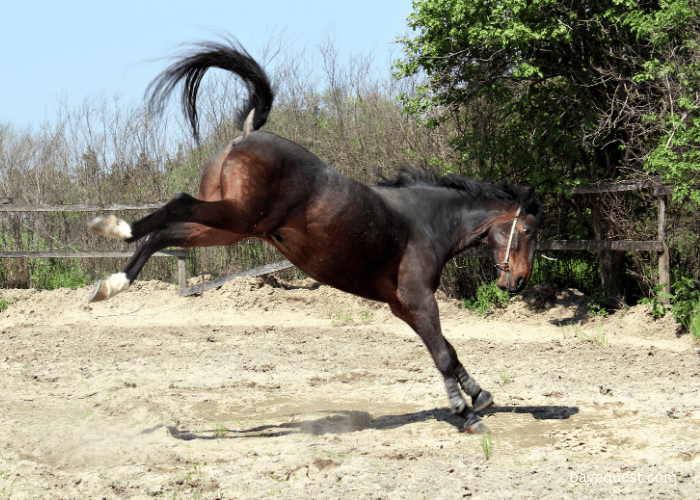
How to Prevent Horse Kicks
Preventing horse kicks is all about understanding horse behavior and taking the right precautions.
First, always approach a horse calmly and from the side. Horses have blind spots directly in front and behind them, and sudden movements can startle them.
Speak softly as you approach to let the horse know you’re there. This helps to avoid surprising them, which is a common reason for kicks.
Pay attention to a horse’s body language. If a horse pins its ears back, swishes its tail, or stomps its feet, it might be agitated or uncomfortable.
These are signs to back off and give the horse space. Understanding these cues can prevent a dangerous situation from escalating.
Keep a safe distance when walking behind a horse. If you need to pass behind, either stay very close, touching the horse, or move far enough away to be out of kicking range. When close, if a horse kicks, the impact will be less severe.
Never walk up behind a horse without warning, and avoid quick, jerky movements. Move slowly and predictably.
If you’re working around horses, make sure they’re properly trained and accustomed to being handled. Horses that are well-trained and handled regularly are less likely to kick out of fear or surprise.
Using proper equipment, like lead ropes and halters, can help control a horse’s movements. Also, keep their environment stress-free.
Crowded spaces or unfamiliar settings can make horses anxious, increasing the chance of kicking.
Regular health checks are also important. Sometimes, a horse kicks because it is in pain or discomfort.
Checking for any signs of injury, illness, or irritation can help prevent a kick. Insect bites or skin issues can also cause a horse to kick out in discomfort.
How to Treat Horse Kicks
Treating a horse kick quickly is important to avoid complications.
First, assess the injury. For serious cases like deep cuts, broken bones, or head trauma, call for emergency help immediately. Do not move the person if there’s a risk of spinal or head injury.
For minor injuries, such as bruises or mild swelling, apply a cold compress or ice pack for 15-20 minutes to reduce swelling and pain.
Over-the-counter pain relief can help, but always follow the dosage instructions.
For cuts, clean the wound with soap and water, apply antiseptic, and cover with a sterile bandage. If the cut is deep, apply pressure to stop bleeding and seek medical attention.
If there’s a suspected fracture, keep the area still and use a splint to immobilize it until help arrives.
Watch for signs of infection, such as redness or pus, and monitor for symptoms of internal injuries, like dizziness or pain. Seek medical help if these occur.
Rest and avoid strenuous activity until fully healed. Follow up with a healthcare provider if needed for further treatment.
What to Do if Your Horse Gets Kicked
If your horse gets kicked, quick action is essential to prevent complications.
Start by assessing the injury. Look for signs of pain, swelling, cuts, or bleeding.
If your horse is limping or seems unable to put weight on a leg, it could be a sign of a fracture or deep tissue injury. In such cases, call a veterinarian immediately.
For minor cuts or scrapes, clean the wound with water to remove dirt and debris. Apply an antiseptic solution to prevent infection, and cover the wound with a clean bandage if possible.
Monitor for any signs of swelling, redness, or pus, which could indicate infection.
Cold hosing or applying an ice pack wrapped in a cloth to the injured area for 15-20 minutes can help reduce swelling and discomfort.
If there is a puncture wound, avoid probing it and call the vet. Punctures can be deeper than they appear and carry a high risk of infection.
Watch your horse closely for signs of shock, such as rapid breathing, weakness, or trembling. If you notice these signs, contact your vet immediately.
Keep the horse calm and confined in a safe area until the vet arrives. Follow the vet’s instructions for further care, such as wound management or rest.

What To Do When Horse Kicking Becomes a Problem
When horse kicking becomes a problem, it’s crucial to address it promptly for safety.
Start by identifying the root cause. Horses kick due to fear, pain, frustration, or dominance issues.
Observing when and why the kicking happens can help pinpoint the cause. If it’s due to pain, have a vet check your horse for any injuries or health problems.
If fear or anxiety triggers the kicking, work on desensitizing your horse. Gradually expose it to what scares them, using calm and gentle handling.
Reward calm behavior with treats or praise. This can help the horse associate the situation with positive outcomes instead of fear.
When kicking is related to dominance or aggression, establishing boundaries is key. Work with a professional trainer to use techniques like groundwork exercises that teach respect and trust.
Avoid punishment, as it can increase fear or aggression. Instead, focus on positive reinforcement to encourage good behavior.
Ensure the horse’s environment is calm, with enough space, food, and water to reduce stress and competition among horses.
Stay patient and consistent for the best results.
Conclusion
A horse’s kick is no joke. It’s raw power packed into a split-second strike. Enough to break bones, leave bruises, or worse.
Knowing this, it’s clear why respect and caution are key around these strong animals. Horses don’t kick without reason. It’s their way of saying, “Back off” or “I’m scared.”
Understanding their signals can keep you safe. So, remember to stay alert and give them space.
Because when it comes to a horse’s kick, it’s always better to be safe than sorry.


 Click To Subscribe
Click To Subscribe

